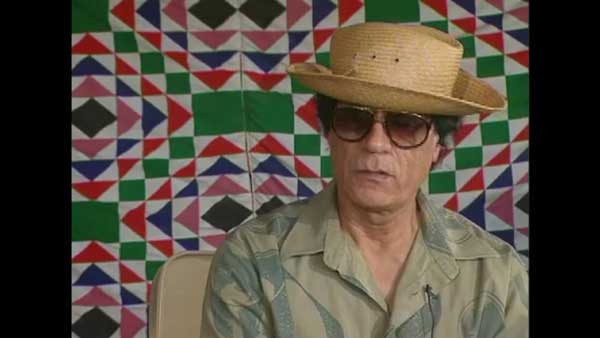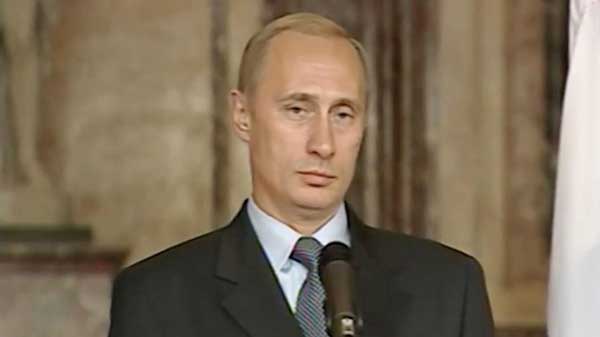I first became aware of the remarkable documentarian Adam Curtis a few years ago, when I stumbled across The Century of the Self, a four-part television program exploring the birth of the public relations industry by way of the career of Sigmund Freud’s nephew, Edward Bernays. The sheer amount of historical detail was a little overwhelming (a hallmark of Curtis’ work, I later learned), but it offered an unusually cogent explication of the difficult idea that the entire consumer culture in which we are embedded began as a deliberately crafted social fiction—in other words, an artwork.
As I became more familiar with Curtis’ BBC films (which date back to the 1980s), I began to suspect that they themselves were artworks of considerable sophistication, whose playful and subversive collage aesthetics were camouflaged by the authoritative documentarian framework—as if Bruce Conner had been recruited to run the History Channel. Many of the rapid-cut found-footage fragments seemed to bear no relationship to the convoluted narratives spoken over them, but were instead chosen for their sheer formal beauty or curiosity value.
Then again, sometimes what looked like a shakily beautiful handheld landscape sequence à la Brakhage will suddenly snap into contextual significance with the appearance of some explosion or key figure exploding. Curtis basically has access to an extraordinary wealth of BBC archive footage, and is constantly amassing more. And he is equally adept at unearthing historically compelling vintage newsfeeds and cinematic snippets of sociological significance as he is at spotting a passage of chance cinematographic beauty buried in hours of forensic video journalism.

I wasn’t sure how self-consciously artistic Curtis was being, until I learned that he cites semiotic/formalist collage master Robert Rauschenberg as a major influence. Cool! To a visually oriented viewer, Curtis’ dense pictorial narratives (and deft, if manipulative, soundtracking) are as overwhelmingly stimulating as the DIY cut-ups of Craig Baldwin or the legendary Los Angeles public-access-TV antics of the Three Geniuses. On top of all this, however, he drizzles a web of interdependent historical anecdotes detailing various nefarious antics of the apparently eternal war between the Discordians and the Illuminati.

Just before the Clinton-Trump showdown, I began to hear a buzz about a new, almost three-hour film by Curtis to be released specifically for the proprietary BBC iPlayer, which only works in the UK. Of course, it was on YouTube and The Pirate Bay the next day, and I’ve since watched the film—entitled HyperNormalisation—several times. HyperNormalisation takes its title and underlying thesis from the idea put forth by Berkeley social anthropologist Alexei Yurchak concerning a Matrix-like false consensus reality that took hold as the Soviet (and by ‘patacritical inference American) empire neared the end.
Curtis’ journey begins with the near economic collapse of New York City in 1975 and the simultaneous double-dealings of Henry Kissinger in the Middle East. From this binary configuration, Curtis derives all manner of subtexts, including detailed and illuminating histories of suicide bombing and Muammar Gaddafi’s ridiculously mutable role in American PR strategies of global misdirection. Along the way, he finds time to make gratuitous fun of Patti Smith and Jane Fonda, credit EFF founder John Perry Barlow with the invention of anarchism, and seemingly tie it all together with a YouTube video of some teenaged-girl named Miranda Duncan (and friends) lite-twerking to The Wop.

Not that I mean to dismiss the strength of Curtis’ political insights—it just isn’t that easy to discern what they are. Does he really believe that bankers only started taking over governments in 1975 (Medicis anybody?) or the hoary liberal chestnut that Occupy failed because they wanted to just tear everything down without a clear idea about what to replace it with? Perhaps the most telling sequence in HyperNormalisation is one in which he profiles Vladimir Putin’s right-brain man Vladislav Surkov, who Curtis describes—with a certain awe—as someone who has applied the theories of the postmodern avant-garde to the theater of global politics.
The problem facing the gnostic documentarian is not to persuade by rational analysis or even hyperbolic counter-propaganda—we know this from the negligible impact that Michael Moore’s Fahrenheit 911 had on the 2004 election—but to find a combination of pictures, sounds, symbols and stories that will snap the hapless viewer awake to the reality of the Matrix. I don’t think Curtis is quite there yet, but hopefully he’ll hit on the formula sometime in the next four years. Say “Bye,” Heather!

